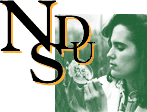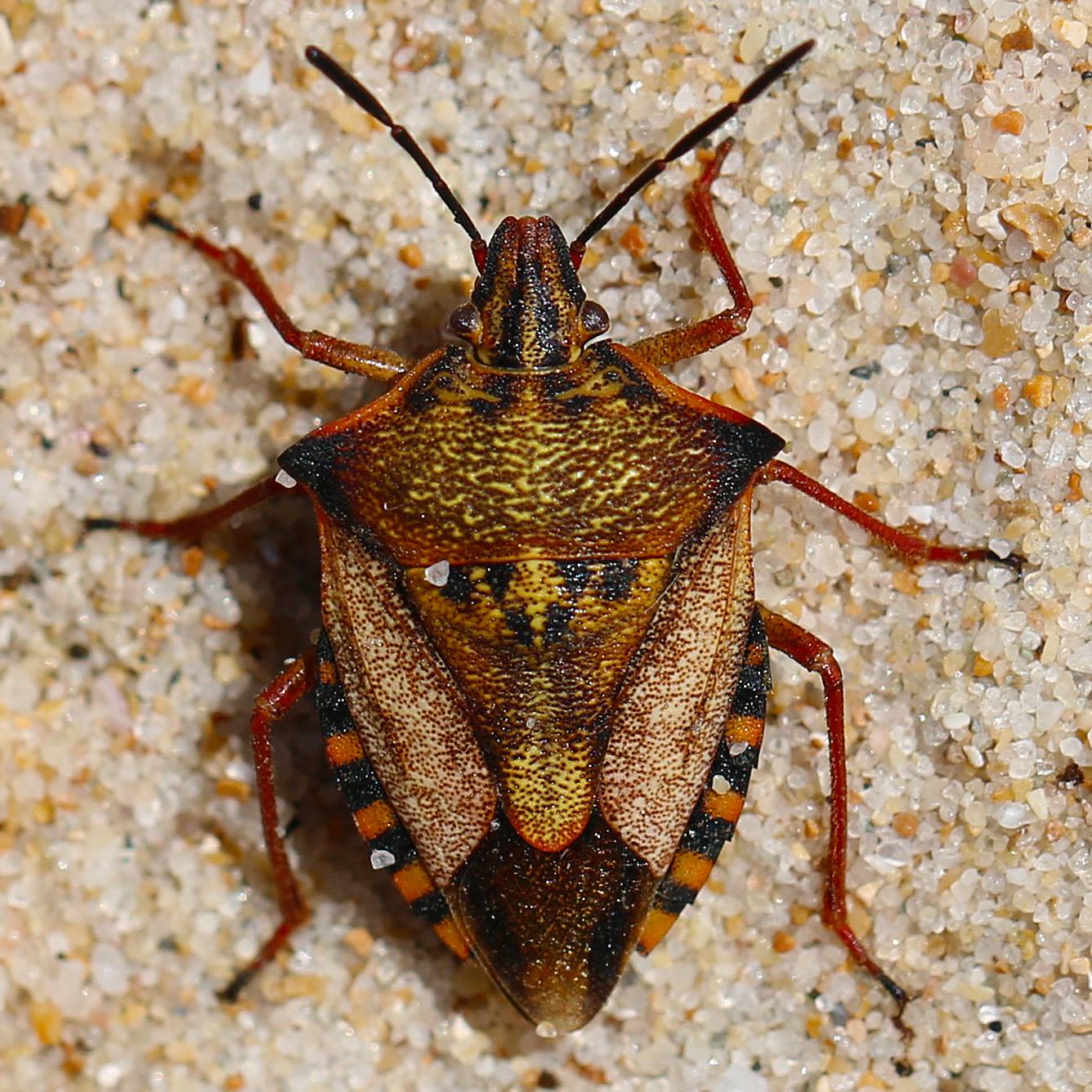 |
|
Carpocoris Kolenati, 1846

Carpocoris fuscispinus
- Photo by Jose Ramon Costello
Carpocoris Kolenati, 1846: 45-46.
Type Species: Cimex nigricornis Fabricius, 1775 (= Cimex purpureipennis DeGeer, 1773), by subsequent designation (Kirkaldy, 1909; also, see note below).
Tribal Placement: This is the type genus for the tribe Carpocorini.
Included Species:
coreanus Distant, 1899
iranus Tamanini, 1958 [jr. synonym]
cyrenaicus Tamanini, 1958
fuscispinus (Boheman, 1850)
mediterraneus Tamanini, 1959
atlanticus Tamanini, 1958
horvathi Tamanini, 1962
melanocerus (Mulsant & Rey, 1852)
pudicus (Poda, 1761)
purpureipennis (DeGeer, 1783)
seidensteuckeri Tamanini, 1959
Comments:
It is rather difficult to determine specimens to species in this genus.
The various species are similar in appearance to each other, and yet they all
display quite a bit of variability within each species. Tamanini worked
extensively on the genus in the late 1950's and early 1960's; more recently,
Belousova (2004) and Ribes et al. (2007, 2008) have reviewed various aspects of
the genus. There continues to be some difference of opinion of the status
of species and subspecies within the purpureipennis group of species,
especially mediterraneus and atlanticus and their confusion (or
synonymy) with fuscispinus. The following key is based on the work
by Belousova (2004) with modifications from the papers by Ribes. Neither
Carpocoris cyrenaicus (Libya) or C. horvathi (Himalaya) were dealt
with in any of the recent papers, and are unknown to me; consequently, they are
not included the key.
Key to males of the genus Carpocoris
| 1 Head of each paramere with a single tooth on lateral surface | 2 |
| - Head of each paramere with two teeth on lateral surface | 4 |
|
2(1) Tooth on lateral surface of each paramere located near apex of parameral head; gonocoxites of female converging; central process of aedeagal conjunctiva very large, not shorter than lateral ones; aedeagus large; vesica very long |
seidenstueckeri Tamanini |
|
- Tooth on lateral surface of each paramere not near apex, located more ventrally on parameral head; inner margins of gonocoxites of female parallel-sided; central process of aedeagal conjunctiva absent or much shorter than lateral ones; vesica shorter |
3 |
|
|
|
|
3(2) Humeral angles of pronotum widely rounded, weakly blackened; abdomen wider than pronotum; scutellum convex, with deep Y-shaped depression; parameres large, elongate at apex; aedeagus large, with large sacciform lateral processes of conjunctiva; vesica longer than 1.2mm. |
melanocerus (Mulsant & Rey) |
|
- Humeral angles of pronotum rounded, with black spot; abdomen usually narrower than pronotum; scutellum weakly convex, without depression; parameres much smaller, rounded apically; aedeagus of medium size, with small ventrolateral process of conjunctiva; vesica shorter than 1mm. |
pudicus (Poda) |
|
|
|
|
4(1) Black spot on each humeral angles of pronotum with internal edge concave, semilunar, or nearly semilunar; anterolateral pronotal margins with more black spots than posterolateral margins; inflated conjunctiva of aedeagus with ventro-lateral lobes very long; parameres with the superior (= outer) tooth of the hypophysis near to the anterior edge and very near to the superior edge |
purpureipennis (DeGeer) |
|
- Black spot on each humeral angle of pronotum differently shaped; anterolateral pronotal margins with fewer black spots than posterolateral margins; inflated conjunctiva of aedeagus with ventro-lateral lobes short; location of superior (= outer) tooth of paramere variable |
5 |
|
5(4) Humeral angles of pronotum short and usually sharply pointed; generally one elongated, black spot, always parallel to the posterolateral free margin; parameres with the superior (= outer) tooth of the hypophysis well separated from the anterior and superior margins |
coreanus Distant |
|
- Humeral angles of pronotum sharply pointed or rounded, protruding more or less; black spot on them, massive, with its internal edge convex; parameres with superior (= outer) tooth of the hypophysis near to the anterior edge and very near to the superior edge |
fuscispinus (Boheman) |
References:
Belousova, E. N. 2004. Use of new characters of the structure of the genitalia in identification of species of the genus Carpocoris Kol. (Heteroptera, Pentatomidae). Entomologicheskoe Obozrenie 83(1):140-146. [in Russian; Engl. transl.: 2004, Entomological Review 84(1):59-64; xerox]
Ribes, J., D. A. Gapon, and S. Pagola-Carte. 2007. On some species of Carpocoris Kolenati, 1846: New synonymies (Heteroptera: Pentatomidae: Pentatominae). Mainzer Naturwissenschaftliches Archiv, Beiheft 31:187-198. [computer copy]
Ribes, J., S. Pagola-Carte, and I. Zabalegui. 2008. On some Palearctic Carpocorini (Hemiptera: Pentatomidae: Pentatominae). Heteropterus Revista de Entomología 8(2):155-169. [reprint]
Tamanini, L. 1958. Due nuovi Carpocoris della sottoregione mediterranea (Heteroptera, Pentatomidae). Annali del Museo Civico di Storia Naturale di Genova 70:165-172. [reprint]
Tamanini, L. 1959. Un nuovo Carpocoris dell'Asia orientale (Heteroptera, Pentatomidae). Annali del Museo Civico di Storia Naturale Genova 71:34-40. [xerox]
Tamanini, L. 1959. Revisione del genere Carpocoris Klt. con speciale riguardo alle specie italiane (Hemiptera Heter., Pentatomidae. Memorie del Museo Civico di Storia Naturale Verona 6:333-388. [xerox]
Tamanini, L. 1962. Descrizione di un nuovo Carpocoris dell’ Himalaia (Hemiptera, Heteroptera, Pentatomidae). Bollettino della Societ
B Entomologica Italiana 92:74-77. [xerox]
David A. Rider
Professor of Entomology
North Dakota State University
E-Mail: David.Rider@ndsu.edu
Published by the
Department of
Entomology
Prospective students may schedule a visit by calling 1-800-488-NDSU.